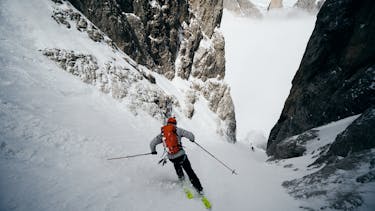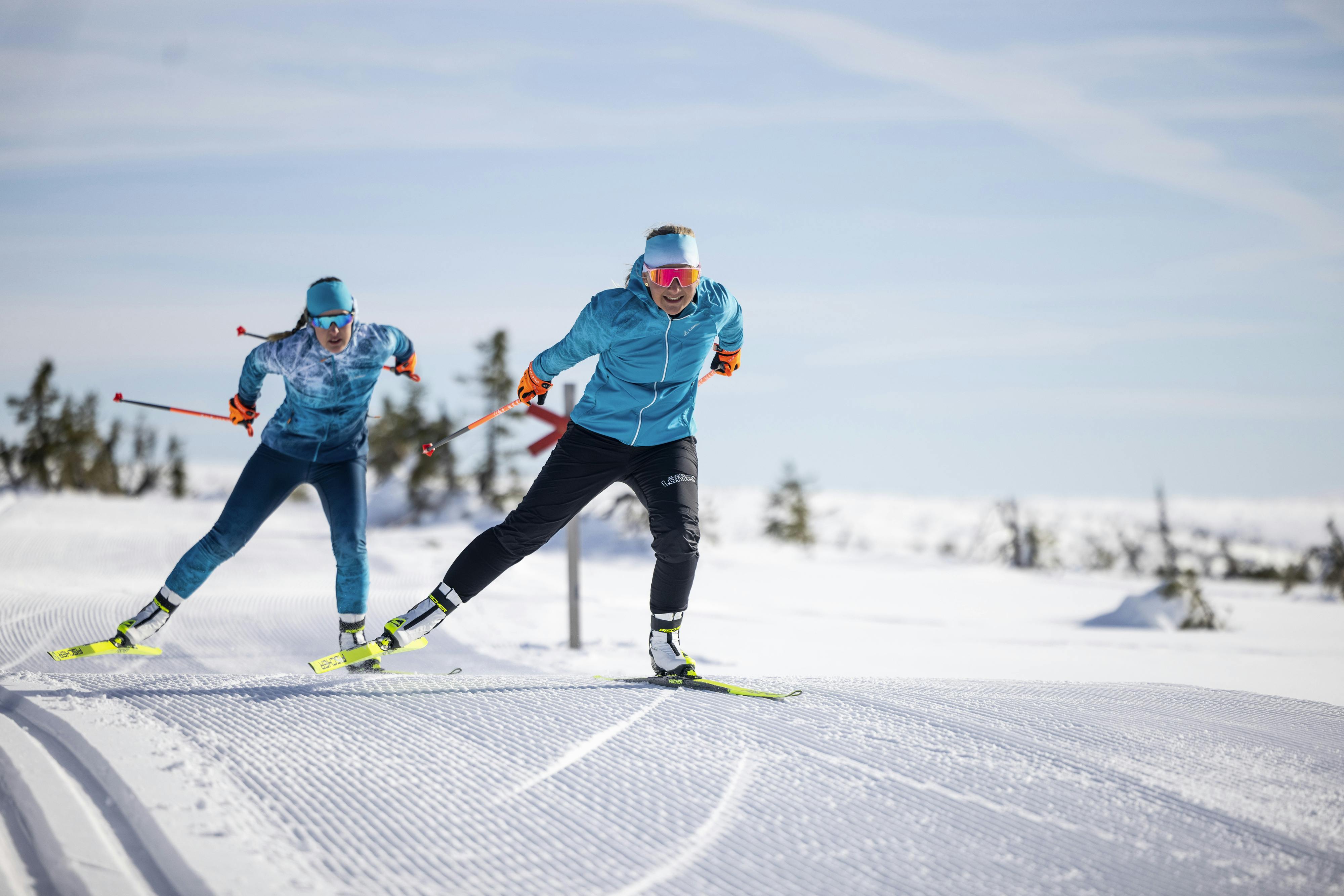Be prepared with ski crampons
Technology and materials
Ski crampons are made of aluminum or lightweight steel. They attach to your binding, resting between boot and the ski, and have sharp teeth that descend below the level of the ski base and to penetrate the hard surface under the weight of a skier.
They may be the only way to proceed when there is surface ice where skis don’t grip, and trying to move with boots means you break through the crust and cannot make forward progress.
Every touring binding has a compatible ski crampon, but make no assumptions with your safety gear and be sure you have the right ski crampon for your binding and ski.
Function
Ski crampons primarily address the risk of slipping sideways. They are not designed for efficient ski hiking in general, since you have to alter your stride, and typically take shorter, slower steps. Of course, the penetrating grip they provide is ultimately a benefit for ascending, but always remember that is not their intended purpose.
Affixing to your binding
Ideally, ski tourers will be concerned about conditions far enough ahead of time to attach their ski crampons while still in a safe, stable spot on the slope. If you are already in a spot where you need ice crampons, that is obviously not where you want to be taking off your skis or kneeling to mount the ice crampons.
Those are, in fact, the best methods for mounting ice crampons:
1. Slide one boot out of its binding.
2. Lean over and insert the ski crampon into the binding.
3. Step back into the binding.
Another way is to stay in your binding, then:
Raise boot up onto the toe so you have room to install the ski crampons while leaning over or kneeling. This has the advantage that you are never out of your ski, but requires more dexterity and flexibility.
Walking technique
The walking motion is generally the same, though somewhat limited, with the following important note:
Remove climbing skins if they will interfere with the ski crampons ability to penetrate the crust. Obviously the risks here twofold, in that the ski crampons can’t function as well, and you could render your climbing skins useless.
When not to use ski crampons
If the ice is completely smooth and very hard, then climbing crampons on your boots are advised. Ski crampons are only an enhancement to the normal function of touring skis.
Ski crampons are for use on snow only. When there is a lot of exposed rock and open ground because they can be damaged or bent such that they damage the bindings.

Far, fast, safe
At Fischer our mission is to inspire touring skiers to fall in love with their sport and go beyond their current personal limits. We enable skiers to enjoy their sport and excel to the next level by introducing the most innovative, reliable and easy to use products. That is why we want touring skiers to be aware of all possible safety equipment available to them.



